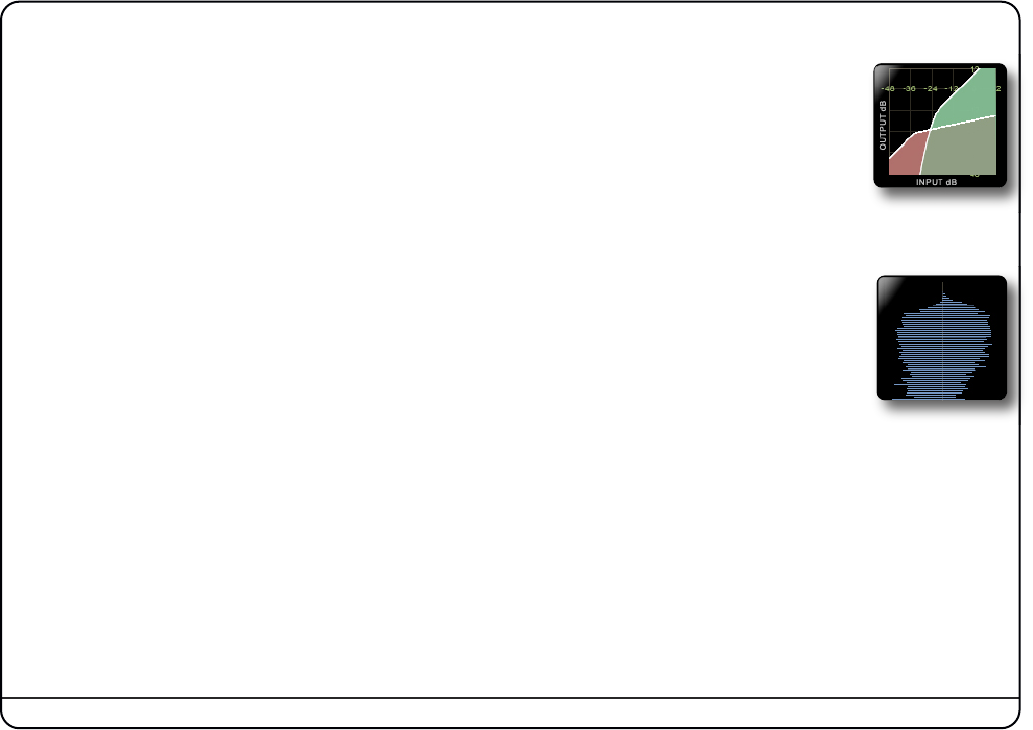
Page 12
5.3 Compander Law Display
This shows the output level for any given input level according to the Compander controls which
are currently being used. You can see both the compressor and expander threshold, indicated by
the two knees. As the ratio of the compressor is increased, you can see the top portion flatten
out indicating that the output level for any given input is being reduced.
5.4 I/O Difference Display
Also known as an amplitude histogram, the I/O Diff meter shows the relative occurrence of various
amplitudes before and after processing. For either input or output, the distance the blue horizontal
line protrudes from the middle and shows the amount of times that a particular amplitude is
occurring. The vertical scale is the full range of amplitudes from –∞ to 0dB. It allows you to see
the shift in dynamic range that occurs over time due to the compansion. Here you can see that
the input signal spends most of the time fluctuating between loud and soft. This indicates that
the signal has a large dynamic range which is changing very quickly. You may wish to compress
this so the peaks are not as high and the troughs not as low.


















